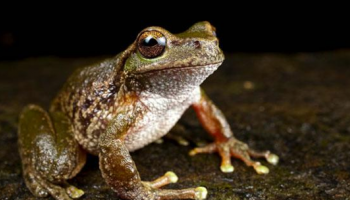“Climate Change” is one of those notorious phrases that has been taken out of context so often and by so many pollies and media commentators that its true meaning isn’t really considered. When the term “climate change” is thrown around the Australian media and political theatres, it’s often linked with the carbon tax, shock jocks and the cult of deniers. This is not ok. Climate change is not a political ideology, a lefty movement, nor a belief system. It’s science. Pure and simple. Today we’re going to try and drop some of that scientific knowledge on your big-ass brains.
The Basics
First off, just to clear one thing up, there is 97% consensus among climate scientists that humans are causing observable climate change. Scientists who contest the basic premise of human induced climate change are generally trained in a different field. When the tabloid media airs these unsupported views, they warp the reality of agreement on the inconvenient fact that we’re changing the climate by giving equal weighting to scientists and skeptics.
Here are the basics of climate science, so you don’t go getting confused with all that BS floating about. The Greenhouse Effect. Basically there are two important things we need to understand about this. First, it is a naturally occurring phenomenon that enables human existence on earth. To summarise, water vapour and carbon dioxide (CO2) – naturally occurring greenhouse gases – act as a blanket trapping heat (energy) in the earth’s atmosphere. Without this blanket, earth’s global average temperature would be -18°C – not so inhabitable. With the blanket the average is 15°C. Let the good times roll. This is the ‘natural’ Greenhouse Effect. Emitting more greenhouse gases, such as CO2, to the atmosphere is like adding an extra blanket. Trapping heat and causing warming. Welcome to the “Enhanced” Greenhouse Effect.
Think of the atmosphere as a bathtub. The tap’s on, the plug’s out and the amount of water pouring is balanced by the amount draining. This is like the natural carbon cycle. What humans have done is turned the tap up, but the sinkhole’s stayed the same size. Eventually this bathtub’s going to overflow, the floor’s going to flood and we’ll get our socks wet. The only way to stop the flooding would be to turn the tap back down. It doesn’t have to be turned off, just down so the sinkhole can handle that flow.
What’s Happening?
The most obvious evidence of the effects of climate change are the disturbing trends in CO2 level hikes and temperature increases on unprecedented timescales. Before the industrial revolution, CO2 concentrations varied mostly from external factors. Today, these concentrations are increasing rapidly. In 2008, CO2 emissions from fossil fuels were 40% higher than 1990. That’s a 40% increase before half of the world had even gained proper electricity.
Now to temperature increases. In the past 25 years, temperatures have increased at a rate of 0.19°C per decade. Since the industrial revolution – 150 years ago – temperatures have risen by 0.8°C, indicating an accelerating trend. But is 0.8°C even a big deal? If you considered a human body over the course of a day, skin temperature changes depending on different factors in your surroundings: whether in a warm or cool room, doing Zumba or meeting Ryan Gosling. However, your core temperature should stay relatively stable, between 35.5°C and 37.5°C. If you get sick with a fever, your core temperature might increase by 1°C. Symptoms may include hot, dry skin or excess sweats, much like droughts and floods predicted with climate change. If you were to increase your temperature by 2 or 3°C, the situation becomes life threatening, as does the climate systems. This is due to feedbacks that exist in all systems accelerating or balancing the situation.
This brings us to feedbacks. Feedbacks are basically just cycles that balance or reinforce a change. So, in the context of climate, water vapour and ice are examples of reinforcing feedbacks. This is what makes the human influence so important. We increase greenhouse gases. The temperature rises. More water evaporates from the oceans and the naturally occurring greenhouse gas – water vapour increases. So the earth’s climate warms. And we go around in circles. Simultaneously, as the Earth warms, ice melts. Sea levels rise, and less energy from the sun is reflected out to space. So the temperature rises and so goes the circle of life, just like The Lion King. These cycles don’t act alone, they make each other worse and they exacerbate our “meager” contribution.
Furthermore, these cycles propel us towards crossing thresholds. This relates to the magic “2°C of warming” where we may experience irreversible change. Imagine you’re trying to push a medicine ball up a hill. If you give it a small push, it’ll fall back down. But, if you get it to the crest, and give it a small push, you might push it to the other side and you’re in unknown territory. The crest is the tipping point and the other side to a completely different climate. To avoid surpassing the tipping point, emissions need to be limited to two tonnes of CO2 per person each year at the most. To put this in perspective, Australian people currently emit over 18 tonnes per person every year. Chinese people emit two. We are the highest emitters per person in the world; action on our side is crucial and equitable.
Extremes and Impacts
Imagine the tipping point as that 2°C of warming in your body. Surpassing that, you’d have a fatal fever. Prior to that there are symptoms. We can picture those as climate extremes. These are rare and high impact, usually occurring in the form of natural disasters such as floods, droughts, bush fires and heat waves. We are already experiencing these symptoms. Hot records are occurring at three times the rate of cold records. Heavy rainfall has increased globally, sea levels have risen 20cm and the south-west of Australia has experienced a 15% decrease in rainfall since the 1970s. Climate extremes are not just about the physical impact, but the economic cost of recovery. For example, the 2010-2011 Queensland floods caused $30 billion in property and infrastructure damage. The 2003 European heat wave caused more than 30,000 deaths and the Victorian bush fires in 2009 caused 173 direct fatalities and a further 374 heat wave deaths. Climate change increases the frequency and intensity of these extremes. Last summer alone Australia broke 123 records in 90 days, according to the Bureau of Meteorology. From the effects of rainfall to drought, weather anomalies are becoming commonplace. But it’s not just about extremes. Like a cancer, climate change effects creep through the system with small visible changes that have profound impact.
These manifest in the form of health, water and food security. The Murray-Darling Basin is the food bowl of Australia. By 2050, accessible water will be reduced by 10-25%. By 2100, reductions could reach 48%. Meanwhile our population is growing and our exports are increasing. Additionally, the water that flows to feed South Australia in the lower Murray is at risk of toxic algal-blooms and a 50% chance of containing too much salt for consumption. Heat affects crops from drought; an increase in pests and water shortages exacerbates this. Whilst Australia bears some of the symptoms, the world’s poorest are disproportionately affected. These are the people, who contribute the least to climate change, but the atmosphere does not punish evenly. The effects are universal: they discriminate against geography, not emission levels.
Skepticism and Analysis
Now we have a base knowledge on climate science and what it means in a human context. But how do people react to this information? Abstract theories and complex science are affected by those who fail to see the forest through the trees. Often termed ‘skeptics’, these people analyse small pieces of information while neglecting the full picture. What surprises the scientific community are the epiphanies of the untrained, discovering ‘new’ (obvious) explanations of climate change. This field is not in its infancy, and the skeptical theories have long been debunked. Popular theories include a ‘lack of consensus’, ‘it’s not that bad, it’s the sun’ or ‘models are inaccurate’. Consensus and seriousness have been covered so we’ll turn to the explanations of the sun and the models.
Recent increases in greenhouse gases swamps all natural forces before present times. The sun has natural 11-year cycles. Skeptics argue that the sun’s warmth has caused global warming, however, recent warming has coincided with sun cooling. So the sun can’t account for recent change. End of story. But maybe the models that predict future change are wrong and the threats not so bad? The Intergovernmental Panel on Climate Change are an organization that reviews all of the scientific journals published on climate science, assessing findings and summarizing information for policy makers. They run models that predict future climate based on natural and human processes. Large uncertainties in these predictions lie in the fact that we can’t predict how humans react. Will emissions be reduced? Carbon pricing taken up? Globally or regionally? But since the models began in 1997, we have tracked emissions trajectories accurately according to the worst scenarios – excluding a short dip resulting from a global recession.
The effects of climate change may not be drastically evident right now. But delaying reaction will exacerbate the feedbacks within the system that cause the symptoms of illness. If your child had a bad fever, would you take them to a doctor? Or wait and see if they magically bettered themselves? Action on climate change is like taking out insurance. The cost of impacts far exceeds that costs of insuring against them. It’s not about opinions or politics but the science and how we can stop the fever from turning fatal.


